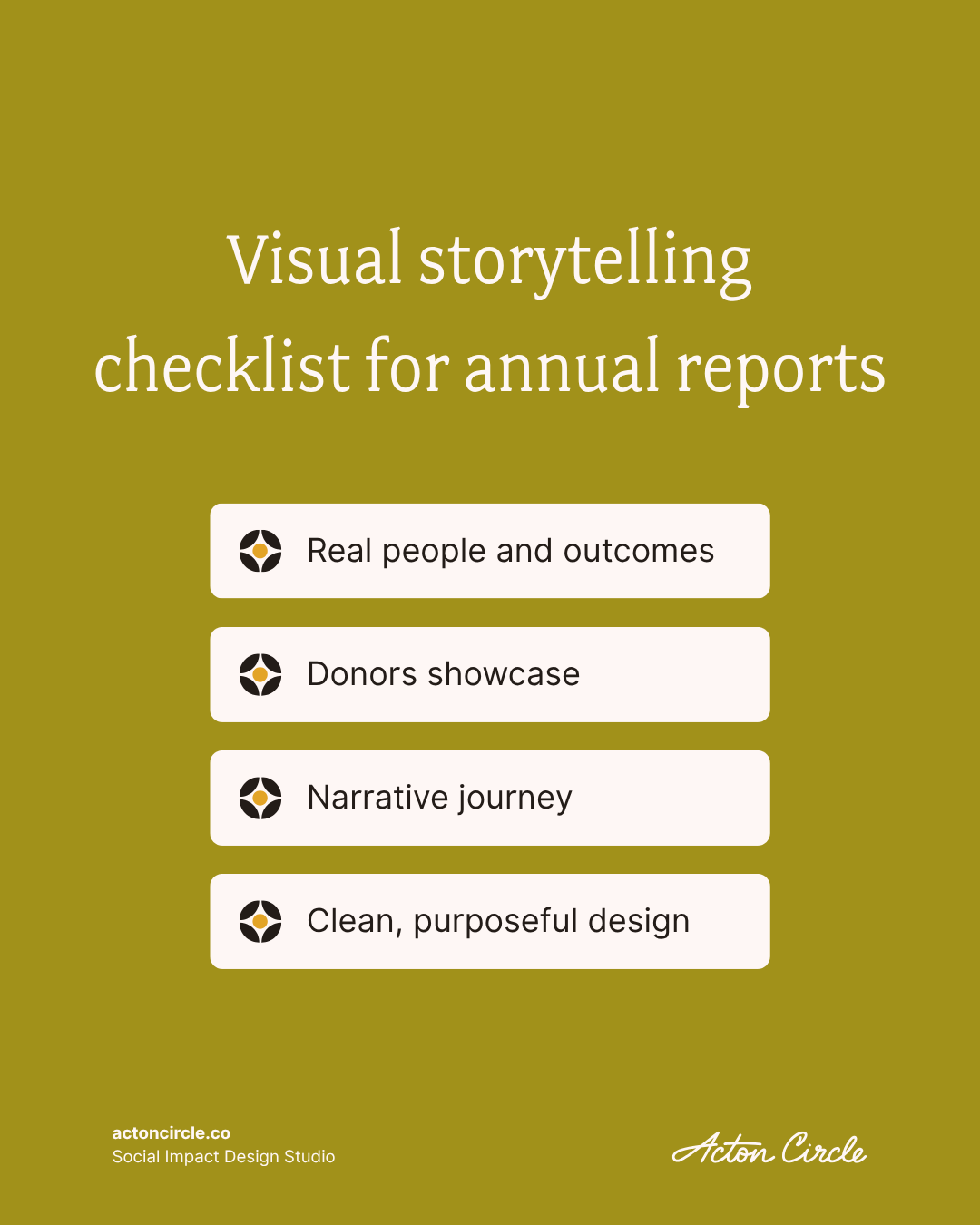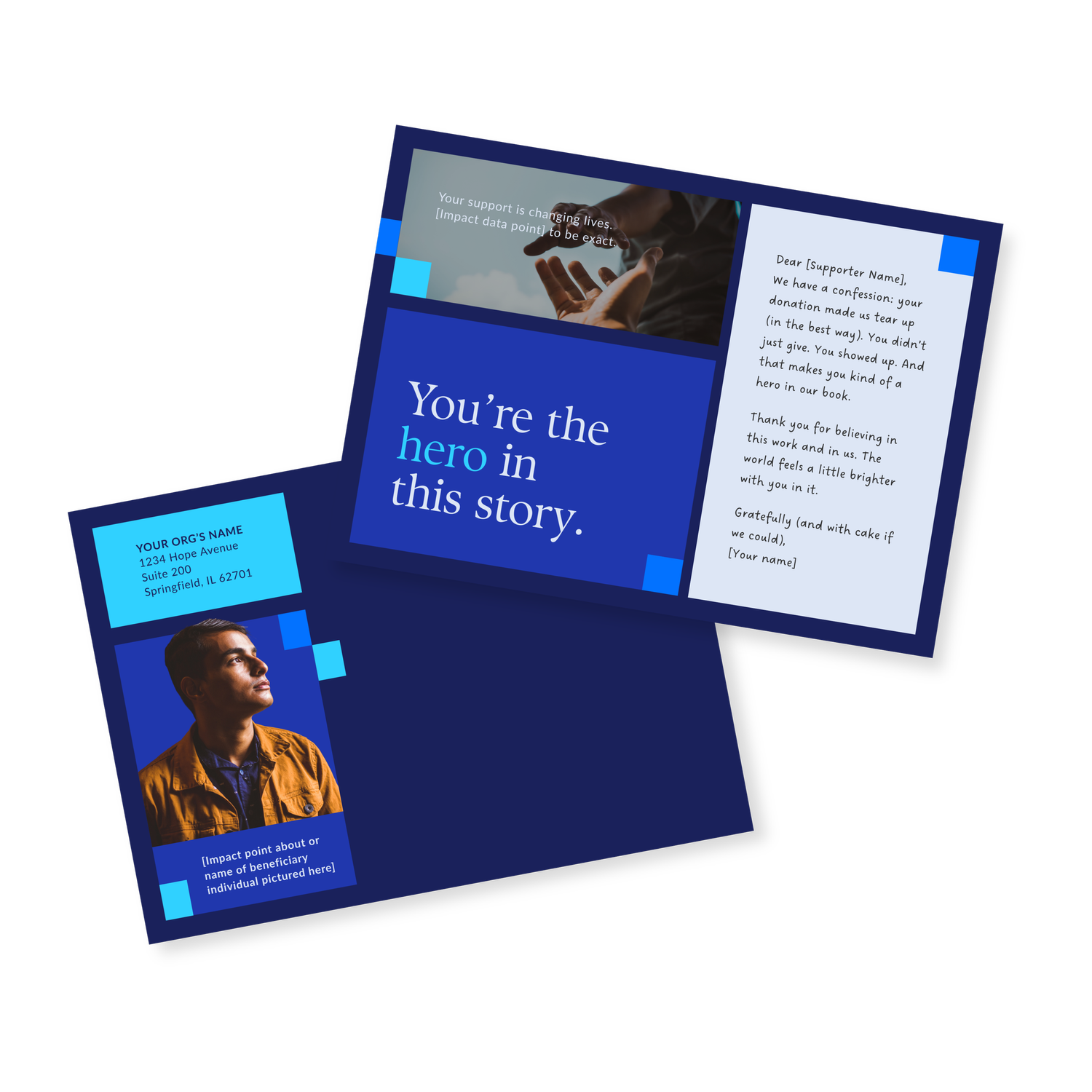Annual reports have a reputation (and we all know it’s…not very good). More often than not, they become dense, data-heavy documents that only a few people actually read. And it’s probably something you don’t enjoy creating.
It’s not supposed to be this way! These reports are a celebration of your organization’s impact and a glimpse into what comes next.
Because when done right, an annual report can be so much more than a numbers recap. It’s a powerful piece of nonprofit storytelling—something that grounds your work, honors your community, and deepens connection with the community.
No, this isn’t about polishing up charts and stats. It’s about telling a story. One that’s clear, visual, and rooted in your mission. One that moves people to believe in what you do, and want to be part of it.
1. More than the ‘Who’ and ‘What’ (It’s Also the ‘Why’)
Donors, board members, and even community supporters aren’t just looking for performance metrics.
While they definitely want to see where their support is going and how, they also want to understand the why behind the work. Not just why it started, but why it has to continue—the real people their support impacts, and the work that’s yet to be done.
Because your mission heroes aren’t pie charts. And your supporters won’t remember financial breakdowns. But they will remember real faces, voices, and stories.
Nonprofit storytelling brings this human aspect to the spotlight. It shifts your annual report from being just a compliance requirement to a genuine tool for communication.
In other words, your annual report creates emotional resonance and trust, clarifies complex outcomes or programs, and builds a clear bridge between donor support and real-world impact. It makes your work more memorable, shareable, and inspiring.
2. Story-First Isn’t Strategy-Last (And Never Should Be)
Let’s not get it confused: storytelling doesn’t replace data—it enhances it. Your annual report still needs to showcase financial health, operational highlights, and key outcomes. Funders, donors, and partners want to know your nonprofit is trustworthy and effective.
But nonprofit storytelling helps ensure that your data means something. It shows you’re connected to your mission. It proves your community’s voice is centered. And it demonstrates how you’re doing meaningful, measurable work worth supporting.
Instead of burying the big takeaways in spreadsheets and small font, emphasize them:
- Pair stats with a relevant story or testimonial.
- Use visually appealing infographics to show scale and context.
- Create a rhythm in your layout between numbers and narratives.
Think balance: emotionally engaging but also evidence-driven.
3. You’re Not Just Telling (You’re Inspiring)
Annual reports can often feel like the final chapter in a story…but they should really be a beginning.
Sure, it recaps your past year. But it also opens doors for what you can and will do going forward. By embracing storytelling for nonprofits, your report becomes a launchpad for deeper engagement.
Here are a few ways to do this:
- Share stories from the report across your newsletter and social media.
- Include a “What’s Next” call to action to inspire continued support.
- Use short-form video clips or testimonials to bring your stories to life in digital formats.
- Build interactive or microsite versions of your report to reach wider audiences.
The more ways you tell your story, the more people it will reach. The goal isn’t just to report what happened. It’s to spark what could happen next—with your community on board.
How to Infuse Storytelling Into Report Design
A story doesn’t have to be 1,000 words long to make an impact. In fact, your annual report design should be concise and focused, using graphics and visuals just as much as written content.
Here’s how to do it well:

Center on Real People and Outcomes
Start with a small number of high-impact stories. Spotlight a family, student, artist, or community member whose life changed because of your work. Add quotes, photos, or even a QR code that links to a short nonprofit video storytelling clip.
Showcase Your Donors
Every good story has a great supporting cast. In your case? It’s your partners and donors. While your mission recipients are your heroes who drive your story, your community of supporters makes the work possible. It’s not “We did this”…it’s “You made this happen.”
Read more: How to Encourage Generous Donors All Year (Not Just at the Holidays)
Use a Narrative Arc
Even in short form, a narrative has structure: the challenge, the work, the result. Take readers on a journey through your programs, showing the before-and-after with effective visuals. Clear graphics to represent your mission, real-life images to highlight your work, and engaging infographics to showcase your impact.
Keep the Design Clean and Purposeful
Design and storytelling go hand-in-hand. Always. Pull out quotes, use powerful photography, and keep text blocks short and scannable. Visual hierarchy matters: guide your reader’s eye with intention.
Read more: 3 Ways Good Design and Communication Work Together
Build Your Next Report with Storytelling at the Heart
Annual reports don’t have to be stiff. They don’t have to be overwhelming. And they don’t have to be boring.
When you approach your next report with your mission in mind, it’s not just easier to create—it’s more rewarding, too. For your team. For your donors. For the people whose stories have to be told.
Need help shaping those stories into something your audience will actually want to read? That’s our sweet spot. From narrative strategy to print and digital design, we help create annual reports that connect and convert.
The Template Shop by Acton Circle offers Canva design kits that allow you to create beautiful, nonprofit-specific annual reports that are as beautiful as they are impactful.
Let’s tell your story—beautifully, clearly, and with purpose.










